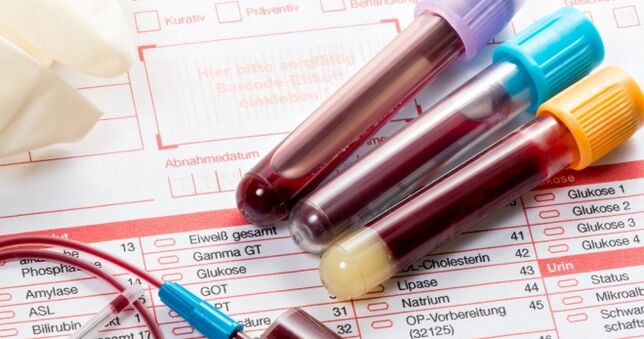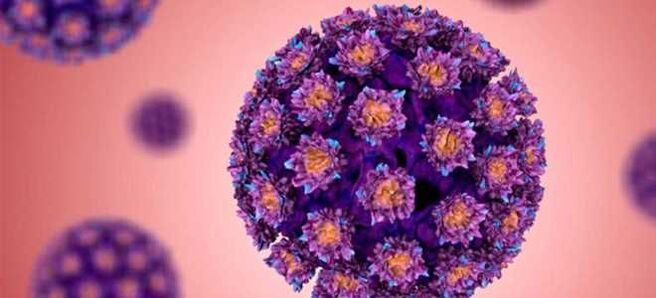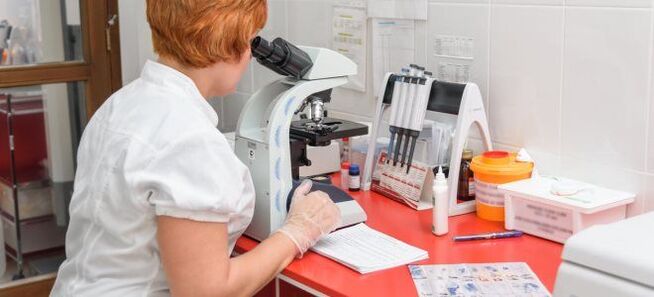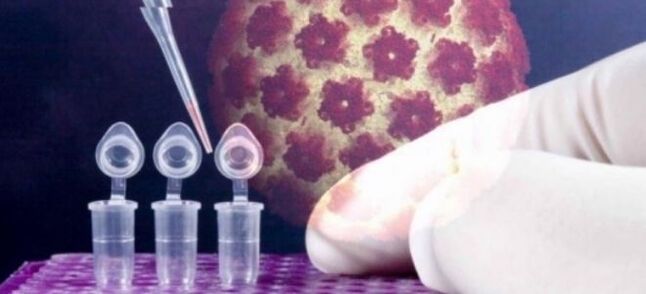
In the presence of symptoms and signs of disease, doctors prescribe many laboratory tests to confirm the hypothesis and make a diagnosis. In the appointment list, patients can find HPV analysis: what, why and when it is prescribed - not everyone can answer.
What is HPV?
Human papillomavirus, HPV is a group of widespread virus-like infectious diseases. Scientists know of more than 100 types of this virus, but not all of them are dangerous to humans. Most of them exist in the body for a long time without knowing it, causing carry. However, about 14 of these viruses are cancer-causing -- they trigger the development of malignant tumors. At the time of diagnosis, doctors always focus on the type of HPV and its carcinogenicity, which determines the nature of further action and treatment.
Human papillomavirus - types
Papillomaviruses are generally divided into groups based on the risk of triggering the development of oncology. With this factor in mind, HPV is divided into three main categories:
- non-carcinogenic- In no way leads to the development of malignant tumors.
- low cancer risk- In some cases, can trigger the development of cancer: 6, 11, 42, 43, 44.
- high cancer risk- When infected with these types of HPV, it is difficult to avoid the development of malignant tumors. Oncogenic human papillomavirus: 16, 18, 31, 35, 33, 45, 58, 59, 52.

How does human papillomavirus spread?
Knowing how papillomavirus spreads can reduce the risk of infection. In practice, however, this is difficult to avoid. In the vast majority of cases, transmission occurs at the beginning of sexual activity: sexual intercourse is the main way the virus spreads. Its transfer can also take place during kissing, when there are microcracks and scratches on the surface of the lips. You can also become infected if you violate hygiene rules while visiting a public place:
- sauna;
- pool:
- bathing;
- And when using someone else's toothbrush, towel, or razor.
Infection can also occur when the baby passes through the mother's infected route during delivery. Experts do not rule out the possibility of transmission of the virus through contact: it is unstable but able to maintain some activity.Factors that cause HPV infection include:
- early onset of sexual activity;
- a large number of sexual partners;
- sexually transmitted infections;
- decrease in immunity.
Human papillomavirus - symptoms
Human papillomavirus can exist in the body invisibly for a long time. According to experts, the incubation period can last from 2 months to 2 years. The course of the disease is subtle: there are no clinical symptoms, and the main diagnostic methods are normal. One-third of patients recover within 6-12 months of infection due to their immune systems.
HPV damage to the body is clinically reduced to the appearance of skin formation. Patients noticed papillomas, warts, and condyloma acuminatum on their skin. Their localization can vary and correspond to where the virus invades the body: genitals, surfaces of hands, lips. These structures look like papillary growths, and sometimes they look like cauliflower. Growths are painless, but they can cause pain and bleeding due to friction and injury.

Why do I need an HPV test?
Now that we've covered the virus, let's move on to learning about HPV analysis: what type of research it is, how it's done, and under what conditions it's prescribed. First, we note that if human papillomavirus is suspected, the analysis can help confirm or disprove these hypotheses. Such research has the following goals:
- Identify high-risk HPVs;
- Confirm/deny persistence of a certain type of HPV;
- Assessing cancer risk in patients with cervical epithelial dysplasia.
In addition to the specified reason for the examination, the HPV analysis (what it is - indicated above) can be displayed in the following cases:
- Preliminary screening for cervical cancer in women over the age of 30.
- To evaluate the outcome of surgical treatment of intraepithelial neoplasia.
- Cytological findings on gynecological smears are suspicious.
What tests should I have for HPV?
There are several ways to determine if papillomavirus is present in the body. However, in most cases, doctors will turn to PCR. If HPV analysis is required, the patient undergoes this test directly. Various biological fluids can be used as examination materials:
- blood;
- Urine;
- Amniotic fluid (when a disease is diagnosed during pregnancy).
When it comes to HPV analysis, what it is and how it is performed, it is necessary to pay attention to the possibilities of studying tissue material. Therefore, during a colposcopy, the doctor carefully examines the mucous membranes of the cervix. The presence of small papillomas on them is direct evidence of the damage HPV is doing to the body. To confirm, take a small piece of tissue and examine it under a microscope to rule out malignancy.
HPV diagnostic methods
HPV diagnosis is a set of measures designed to determine the presence of the virus and determine its type. For this, the following techniques are used:
- dual gene test- Modern precise method. With its help, the concentration, type and carcinogenicity of the virus in the body can be determined. The material used in the study was scraped from the mucous membranes of the urethra or vagina. It is often used in conjunction with cytology.
- PCR diagnosis of HPV- A simple and affordable diagnostic method that is widely available. The material used is the patient's blood or urine. Assume that traces of viral DNA in the sample are detected.
- cytology- Examine the smear under a microscope. The evaluation criterion is the presence or absence of modifying cells - keratinocytes and helical cells - in the smear.
- Detect HPV antibodies- Helps to identify viral infections at an early stage. The disadvantage is that the concentration and type of virus cannot be determined.
- Histology - Examination of samples of affected tissue to determine the type of HPV and its carcinogenicity.

Human papillomavirus - how is it tested?
Before the test, and even during the referral, the doctor will tell the patient in detail how to get the HPV test in the specific situation. Analysis algorithms may vary depending on the method used and the material being examined. Preparing for research is very important. Correct execution of the preparatory measures at each point allows you to obtain objective analytical results and eliminate the need for repetitive execution.
Prepare for HPV analysis
Patients must meet a number of conditions before being analyzed for HPV. In this context, the method of investigation and the type of material analyzed are critical. It is expressed as:
- blood;
- Urine;
- A swab of the vagina or urethra.
Depending on the type of biological fluid studied, the patient is given advice on how to prepare for the analysis the day before. Candidates are tasked with fully complying with the test preparation rules. This will avoid getting false results and, in some cases, false positives when the results indicate that HPV is not present.
HPV blood test
When it comes to how HPV testing is done, it should be noted that, in most cases, the patient's blood is used for the test. The study was carried out on an empty stomach: 10-12 hours before the expected time of taking the material, the patient cannot eat; as a drink, you can use plain water without gas. For 2-3 days prior to the analysis, alcoholic beverages, fats and junk food were prohibited. Only in this case can an accurate test result be obtained by diagnosing HPV through blood.
HPV smear analysis
This method is more commonly used to check for fair gender. Before women are tested for HPV, they are ready for the test. The doctor detailed all the preparation rules to the patient.During this process, the following points can be highlighted:
- Do a smear before starting a course of antibiotics or 2. 5 weeks after treatment ends.
- On the day of sampling, the use of chemical hygiene products for external genital toileting is prohibited.
- Do not douche, enter vaginal suppositories.
- You must avoid sexual intercourse the day before taking the material.
- Analyses are best done mid-cycle; studies during ovulation are contraindicated.

Decoding HPV Analysis
Only a doctor can correctly interpret the results of an HPV test. Experts assess not only quantitative values of indicators, but also clinical manifestations, possible signs of infection. A comprehensive understanding of what is going on can help choose the right medication and choose an effective treatment. At the same time, it is important to consider the severity of prompt diagnosis and treatment: as patients age, the risk of developing malignancies increases.
Quantitative HPV Analysis
When using quantitative assays for HPV testing, decoding involves determining the virus concentration at the time of the study. This helps determine the right strategy for patient management. Real-time PCR (RT-PCR) measures the amount of HPV DNA in the test sample. This is necessary for continuous dynamic monitoring of specific types of HPV.
However, even those who understand HPV analysis, what it is and how it is performed cannot interpret the results independently. This must be done in conjunction with the examination of the patient and other tests. When evaluating, experts follow the following interpretation of the indicators:
- lg< 3- low risk of stunting;
- LG 3-5- a clinically meaningful outcome with a risk of developing cervical dysplasia;
- lg >5- There is a high probability of stunting, possibly the initial stage of the disease.
Qualitative HPV Analysis
Use this technique for high cancer risk HPV analysis. Helps identify HPV types 16 and 18. These forms of the virus often cause female genital and squamous cell carcinomas, genital warts, and cervical dysplasia. The detection efficiency of HPV DNA reaches 98%. The conclusion presents an answer with an indication of each virus type. There are two possible outcomes: found/not found.













































































